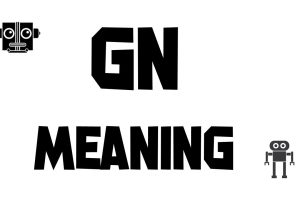
At the most basic level, Sourcing and e-Sourcing are actually not that much different. In both cases, Procurement professionals work to find the best products from the best suppliers at the best prices and terms. The main difference between Sourcing and e-Sourcing lies in the tools used to carry out daily and strategic sourcing activities. Let’s see 7 keys to success in increasing procurement process activities in your company.
Traditional sourcing limits efficient collaboration with internal & external stakeholders and suppliers with tools like email, phone, spreadsheet, PDF, and even fax. In addition to collaboration, these tools limit transparency, standardization, scale, and automation. All of these elements serve as the basis for effective e-sourcing software:
- Collaboration
With e-Sourcing, collaborative sourcing is good sourcing. Collaborative sourcing involves stakeholders in gathering requirements, reviewing & rating supplier proposals, and selecting the best strategic option that yields significant benefits, such as enhancing the understanding of products, services, and requirements. Improved supplier collaboration increases engagement and can generate new and differentiated product and service offerings.
- Transparency
Traditional Sourcing tools provide limited scheduling, data, analysis, and execution transparency, e-Sourcing, on the other hand, provides global teams and stakeholders with an opportunity for complete transparency. Transparency improves efficiency, enables collaboration, and streamlines strategic initiatives and spend management. Ultimately leading to better outcomes.
- Standardization
Often procurement buyers are left with little structure or support throughout the sourcing process. This can lead to process differences across the organization, leading to confusion across procurement teams as well as suppliers and ultimately impacting data quality, decisions, and results.
E-Sourcing provides sourcing personnel with template-based Projects and eRFx (RFQ, RFP, RFI, Auctions) which reduces effort and the overall sourcing cycle time needed to initiate and manage sourcing processes. For global organizations, standardization makes an even bigger impact on data and analysis quality and coordinating joint initiatives.
- Scale
Traditional sourcing includes manual and inefficient management, analysis, and coordination activities across cross-functional teams that can span multiple regions. Traditional sourcing tools lack the automation required to manage large volumes of sourcing events and those that are or complex and consume significant time and effort to analyze results.
E-Sourcing provides teams with the ability to manage multiple projects simultaneously and transparently view project status and activity. It also provides procurement with the ability to seamlessly manage more complex projects. E-Sourcing also enables e-Auctions and other advanced sourcing tools, which can dramatically speed up the negotiation time for all manner of products and services. Furthermore, reporting and analysis can be completed rapidly with a push of a button, saving hours or even days of work for a single project.
- Automation
Traditional sourcing tools lack automation, requiring significant manual effort to assemble RFx information and processes, alert & manage suppliers, e-Sourcing enables automated notifications and reminders for buyers, stakeholders, and suppliers. The RFx setup & process can also be largely automated based on preset templates, seamlessly copying data from repositories, contracts, and requisitions rather than manual data entry.
Another automation benefit comes towards the tail end of the RFx process, during submission reporting and analysis. E-Sourcing reports can speed up analysis and calculations across extremely large volumes of line items, products, goods, services, etc. can be handled with ease.
- Reduce costs
Whilst saving money is only one aspect of good procurement practice, it’s a main driver of e-Sourcing. The ability to access a broader range of suppliers, and the different bidding approaches that systems facilitate, can provide for incredibly successful outcomes for buyers, e-Sourcing systems also speed up procurement processes – reducing the total time of a tender process and cutting the number of hours procurement managers spend on tendering – freeing up valuable time for them to focus on strategic activity.
In addition, the process efficiencies that these systems bring reduces expenses for both buyers and sellers, particularly in print and paper costs.
- Improve Supplier Relations
E-Sourcing can bring huge improvements in transparency and openness between buyers and suppliers. The systems provide a portal through which suppliers can see all tender opportunities from a supplier, with deadlines, their current statuses, and the final outcomes all clearly presented.
Interaction through the system ensures speedy communication and effective feedback – so suppliers are always aware of the current situation.
The reduction in geographic boundaries e-sourcing facilitates, along with the clear publishing of tenders, allows suppliers to efficiently engage in more opportunities. This brings the potential for buyers to develop relationships with companies whose size or proximity might have previously been a barrier.
Conclusion
Simply put, benefit e-Sourcing is a collection of digital tools that help streamline, simplify and improve the strategic sourcing activities and Procurement processes performed by an organization’s Procurement team. The e-Sourcing tool enhances Procurement’s ability to generate value for the organization by managing ALL expenses and ALL suppliers, reducing supply chain risk, and increasing savings.




